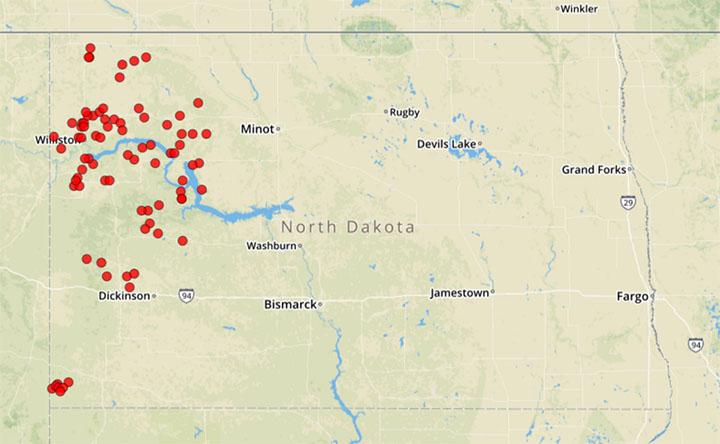
The analysis, published in Environmental Science & Technology, is said to have identified 6,648 spills recorded across Colorado, New Mexico, North Dakota and Pennsylvania over a 10-year period.
"This study provides important insights into the frequency, volume, and cause of spills," said Lauren Patterson, policy associate at Duke University's Nicholas Institute for Environmental Policy Solutions, and the study's lead author.
According to Duke University, researchers examined state-level spill data to characterise spills associated with unconventional oil and gas development at 31,481 wells hydraulically fractured, or fracked, in the four states between 2005 and 2014.
"State spill data holds great promise for risk identification and mitigation," Patterson said in a statement. "However, reporting requirements differ across states, requiring considerable effort to make the data usable for analysis."
North Dakota reported the highest spill rate, with 4,453 incidents, followed by Pennsylvania at 1,293, Colorado at 476 and New Mexico at 426. The University added that the number of spills reported is partly a reflection of the reporting requirements set by each state: North Dakota required reporting smaller spills (42 gallons or more) than Colorado and New Mexico (210 gallons or more).
"As this form of energy production increases, state efforts to reduce spill risk could benefit from making data more uniform and accessible to better provide stakeholders with important information on where to target efforts for locating and preventing future spills," Patterson said.
The results of the study are said to exceed the 457 spills calculated by the US Environmental Protection Agency (EPA) for eight states between 2006 and 2012 because the EPA's analysis concentrated on the hydraulic fracturing stage, rather than the full life cycle of unconventional oil and gas production.
"Understanding spills at all stages of well development is important because preparing for hydraulic fracturing requires the transport of more materials to and from well sites and storage of these materials on site," Patterson said. "Investigating all stages helps to shed further light on the spills that can occur at all types of wells, not just unconventional ones."
Fifty per cent of spills identified in the study were related to storage and moving fluids via pipelines, although it was not always possible to determine the cause of the spill because some states explicitly required this data to be reported while others relied on narrative descriptions.
Across all states, the first three years of a well's life - when drilling and hydraulic fracturing occurred and production volumes were highest - had the greatest risk of a spill. The study found that a significant portion of spills (from 26 per cent in Colorado to 53 per cent in North Dakota) occur at wells that experienced more than one spill.





Project to investigate hybrid approach to titanium manufacturing
What is this a hybrid of? Superplastic forming tends to be performed slowly as otherwise the behaviour is the hot creep that typifies hot...